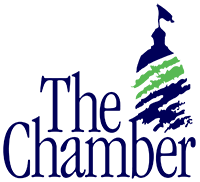Events Upcoming
New Members
Effective AI Usage Will ‘Keep Humans at the Center’
In order to successfully embrace artificial intelligence, organizations need to view the technology as not just a tool, but an opportunity. AI has the power to unlock human potential, according to Nichol Bradford, SHRM’s executive in residence for AI+HI.
“There’s a real opportunity to leverage the technology—no matter the level—for anyone and everyone to operate at the top of their game,” Bradford said in a concurrent session titled “Unlocking Human Potential: Navigating the Maturity Model for Change” on June 25 at the SHRM Annual Conference & Expo 2024 (SHRM24) in Chicago and virtually. It was the third and final presentation by Bradford in a series of talks at SHRM24 on the topics of AI, human intelligence, and their overlaps.
She noted that while many companies recognize AI’s potential, few are actually prepared to adopt it. Meanwhile, workers are clamoring for training and development, even as they express fears of failing when they experiment with new technology such as generative AI. Many employees are moving forward with AI use in their daily work, even without their bosses’ permission.
“Today, leaders everywhere believe that AI is going to change everything, and most of them so far don’t yet have a plan,” Bradford said. “Many leaders do not believe that their employees can make the jump, but the employees think they can. They think that they have a grasp of it. With training, they’re certain that they can make the transition.”
Employers need to remember that AI’s strength lies in augmenting, not just automating, the work already being performed by human employees. Human-centered AI implementation entails upskilling and reskilling the existing workforce. When done correctly, it should actually lead to the creation of more jobs in many workplaces, rather than the elimination of existing ones, Bradford said.
She noted that HR professionals who have the opportunity to experiment with AI tools are more likely to see the technology as job expanding.
“AI is actually your newest team member, and so the question is, and all the thinking is, we keep humans at the center, and we prepare the organization for the newest team member,” Bradford said. “AI is more than just a technology tool. It is the future of work, but HR is uniquely positioned to bring human intelligence and have it central.”
Session attendees were encouraged by Bradford’s optimistic outlook regarding AI and noted that it was in line with how they themselves view the technology: as an exciting opportunity, rather than something to fear. Sarah Zasso, SHRM-CP, an HR generalist at steel manufacturer Zekelman Industries in Chicago, described AI as an “additive” tool that can help in her day-to-day work.
Jessica Stephenson, SHRM-CP, owner and consultant at Mosaic BizOps in Avon, Ind., said that like Bradford, she looks at AI adoption as a cycle.
“It’s continuous and it’s not linear and it’s an iterative process. You’re never done, you just tweak it and learn from it,” she said.
Both Zasso and Stephenson said they already use AI in their jobs to augment their existing tasks such as writing, editing, and research. They are hoping to earn the new SHRM AI+HI Specialty Credential to develop their AI capabilities and master new applications so they can better serve their organizations.
Bradford urged HR professionals who are curious about the potential benefits of AI for their work to become familiar with the technology and approach their companies’ leadership about implementing it. A partnership between the CHRO and the chief information officer can help ensure AI technology is integrated into the organization effectively.
This is the time for employees to step up and position themselves as AI catalysts. According to Bradford, AI catalysts:
- Prioritize AI opportunities.
- Convey value to leadership.
- Secure resources and buy-in.
- Educate and orchestrate teams.
- Connect key business strategies.
- Gradually change culture.
She noted that these are all tasks that HR already performs effectively. But HR professionals need to get past any potential fears of new and unfamiliar technology in order to lead their organizations into the future.
“It’s OK to not have a strong understanding of AI yet,” Bradford said. “You’re not late, but you must start.”
Companies across all industries need to be open to a total transformation of the way they work in the coming years, she said. AI trailblazers who welcome this shift with open arms will find that they can make their mark on the technology at the same time that it is reshaping every aspect of what they do.
“This change that is happening with AI is so consequential, it’s so important,” Bradford said.
“The rate of change is so fast, and today is as slow as it will ever be. … How do we reinvent work and prepare workers for the change?”
This article courtesy of Society for Human Resource Management (SHRM)

